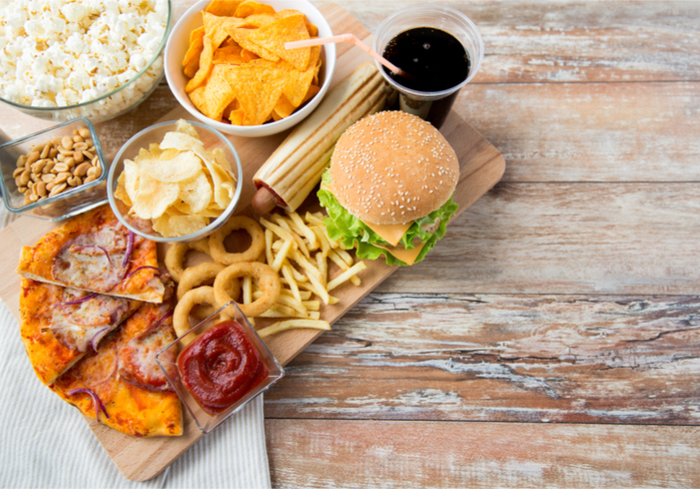Restaurants Take On Digital Innovation With Mobile Ordering And Payments

It’s a big job to bring restaurant dining and ordering options to consumers who may use multiple digital channels.
To keep up with the pace of innovation as competitors move toward mobile ordering, delivery and payments innovations, Restaurant Brands International (RBI), which owns Burger King and other brands, hired CFO Josh Kobza as its new czar leader in January.
But not all QSR chains are so focused. With an average innovation index score of 38 out of 100 on PYMNTS’ Restaurant Readiness Index™, restaurants clearly have some work to do. Here are five restaurant chains in different segments that have taken the leap into the digital age while trying to get up to speed on the latest on ResTech.
Coffee and tea QSRs scored an average of 35 on the index. Starbucks, for example, is moving ahead full force when it comes to technology enhancements. The company announced plans for a mobile-only ordering store in its Seattle headquarters in 2017, and now it’s bumped it up another notch. Starbucks and Chase announced in February that they were rolling out a Starbuck Rewards Visa Card, a co-branded credit card integrated with the Starbucks Rewards loyalty program. In a press release, the companies said the credit card will allow customers to earn Starbucks rewards stars with every purchase, whether at the coffee shop chain or with retailers worldwide that accept Visa. Accrued rewards points can be redeemed at Starbucks locations around the globe. Customers also receive exclusive perks and benefits with the credit card.
Burger QSRs scored an average of 36 on the index. While pizza restaurants like Domino’s and coffee retailers like Starbucks were early with mobile ordering and payments, the burger fast-food chains have been slow to adopt the technology. Burger King has a leg up on McDonald’s when it comes to letting customers order and pay for their food with their mobile phones, Bloomberg has reported. It has been testing mobile payments in the Miami area since December 2017, and is aiming to roll it out on a broader scale, according to Jose Cil, Burger King’s. Cil noted it’s likely there will be a national rollout of mobile ordering and payments in the coming months.
Mexican QSRs scored an average of 39 on the index. Chipotle updated its mobile app aimed, an offering with customers’ dining and online ordering experiences in mind. The updated app, which launched in 2017, is geared toward mobile users who are looking to make the most of the on-the-go Chipotle experience through features like quick online reorder of their favorite meals, streamlined payment options and the ability to receive, store and redeem Chipotle retail offers. Among other new features, the Chipotle app comes loaded with the ability to tap into Apple Pay or Android Pay, an easier-to-use store locator and an improved design for easier navigation.
Chicken QSRs scored an average of 39 on the index. El Pollo Loco has also improved its offerings by launching a new loyalty program, overhauling its mobile app and introducing delivery service from some of its Southwest and West Coast locations. The loyalty program was developed by Punchh and is available through the fast-casual Mexican restaurant’s app. The premise is simple: Customers earn a point for every dollar spent. When they reach 100 points, they get a $10 reward. New sign-ups also get to enjoy a free entrée reward. Later, they’ll receive them for birthdays and special surprise offers tailored based on their activity. The overhauled app helps customers find information about products and restaurants, place orders for both individual meals and catering services, enter coupons and offer codes, pay in advance and schedule a pick-up date and time.
Soup/Salad/Bowl QSRs scored an average of 50 on the index. Those looking to spend a little green at popular salad chain Sweetgreen may be disappointed over the coming year, as the company announced in 2016 that it has plans to go cashless. “Cash has become such a smaller piece of our tender,” said Sweetgreen co-founder Nicolas Jammet. “When we opened nine years ago, it was 40 percent. Now, all stores are between 10 percent and 15 percent.” Jammet and Jonathan Neman, Sweetgreen’s other co-founder, explained there are many reasons the chain will soon go cashless, including that cash-free stores reduce the chance of robbery and can avoid having the expense of transferring cash via armored vehicles.
With all the QSRs introducing new technologies, digital czars like Josh Kobza equally have a tall order and many opportunities to drive change in the industry.
“I’m looking forward to finding new ways technology can help us enhance the experience millions of guests have when they interact with our brands every day,” Kobza said in a statement.